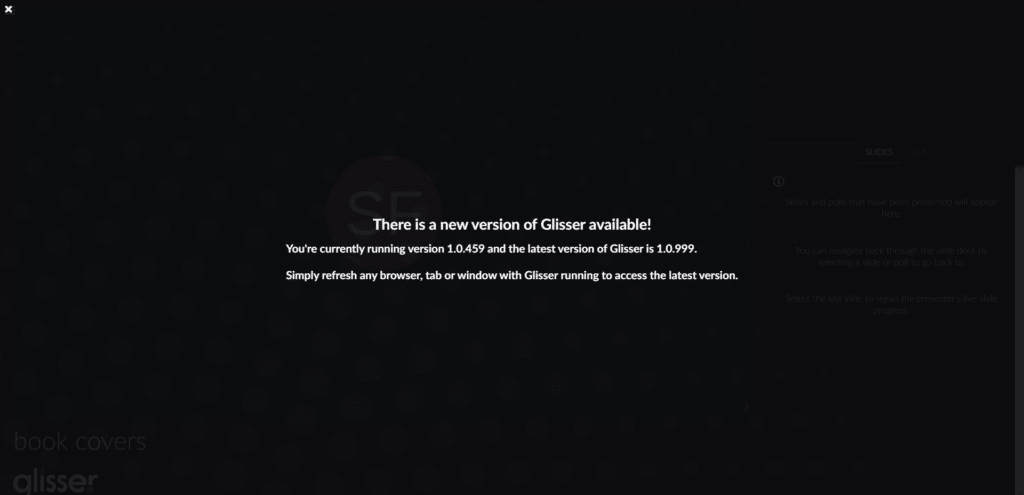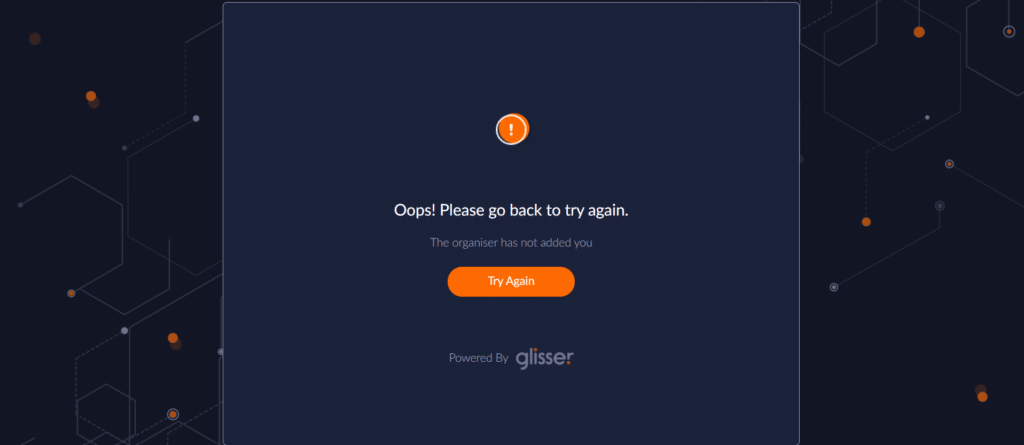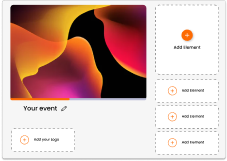Webinar with EY: Data Insights from Virtual Events
Virtual Events 2.0: Responsive Tactics to MarComms Strategy:
Audience access restrictions are plentiful and can be hugely frustrating for you and your audience members! This article explores the different blockers which could be preventing your audience from accessing the Glisser platform, as well as how to help resolve.
If you continue to experience any device related issues, then you may contact the Glisser team using our delegate IT Support Modal.
Glisser frequently updates and releases new features in line with our client needs. For most individuals this will update automatically, but for some you may need to refresh your screen or clear your cache.
If your browser is running an older version of Glisser from it’s cache you will have access restrictions and you will receive the below pop-up.

Another audience access restriction is firewall restrictions. These will define the types of web based traffic that is allowed or blocked. A firewall rule can be applied to traffic from the Internet to your computer (inbound), or from your computer to the Internet (outbound). Most enterprise level networks (such as schools, university campuses and corporations) will have a long list of blacklisted websites that they don’t want you to access using their Internet Service Provider.
Though it is rare (not impossible) for Glisser itself to be blacklisted amongst these sites, it is common place for the streaming hosts that we integrate with to be blocked, specifically YouTube. Unfortunately we cannot control whether or not our site or any of our streaming sources are being restricted. Below are some ways to bypass or resolve network restrictions:

There is a chance that your audience could have access restrictions and be confronted with the screen below asking them to “Enter Glisser code to join”. This page appears when it does not recognise the submitted URL, this could because they have typed the link incorrectly on their device or the source link they have clicked on is incorrect. The page is asking for the unique section of the session/ event URL e.g. the part following glsr.live/…. In order to access the session/event. To resolve:
2020 stressed the importance of having a decent enough WiFi connect to avoid embarrassing network drops during your team calls. Therefore a key audience access restriction Like any video conferencing/ streaming site, you do require a stable WiFi connection in order to ensure a completely seamless viewing experience. Below are some things you can do to improve WiFi connection.
Chrome and Firefox are the two best supported browsers that you can select when using Glisser and will reduce any audience access restrictions. We do not support the use of Internet Explorer – why? Because internet explorer is not safe! Don’t take our word for it, there are 100s of articles outlining the risk associated with browsing the web on IE. Safari will not restrict your access to the Glisser platform itself but is not best supported, primarily when integrated with Zoom.
Glisser allows you to entry-list your audience members emails/ unique IDS to ensure only those that are registered can enter. Once logging in as an audience member, access will be refused if the email/Unique ID that is being entered is not registered on the whitelist. The account admin can log in and add to the whitelist as well as search for those who may be registered. See our entry-list support article for more information.

For more information on how you can use Glisser to increase attendance and reduce cost per attendee, please
